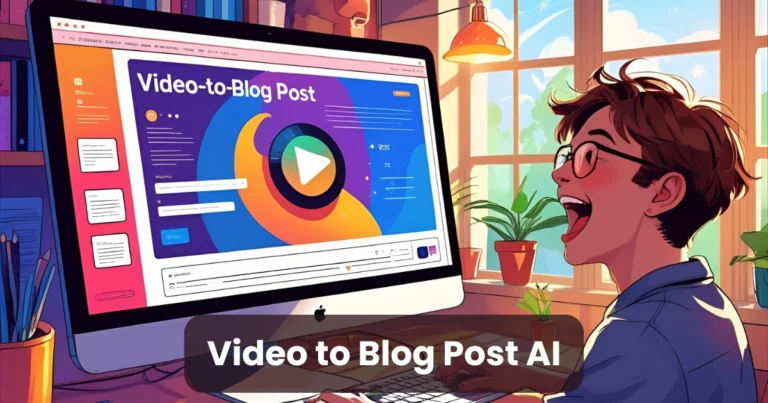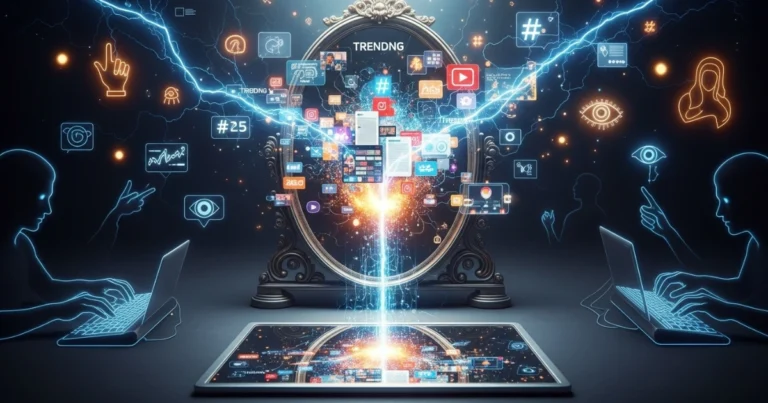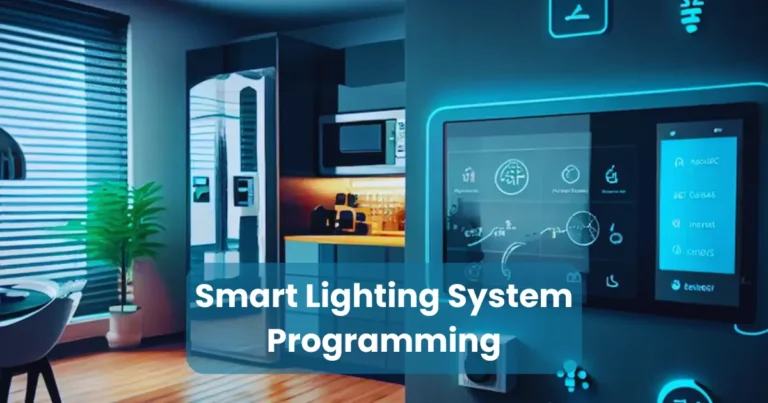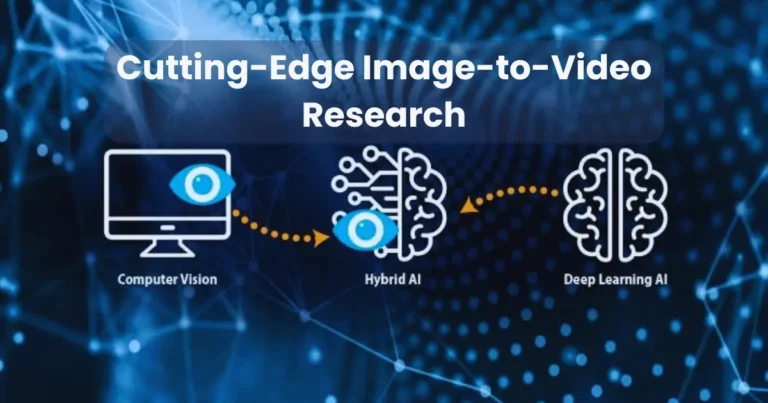Deep Learning Models for Image-to-Video
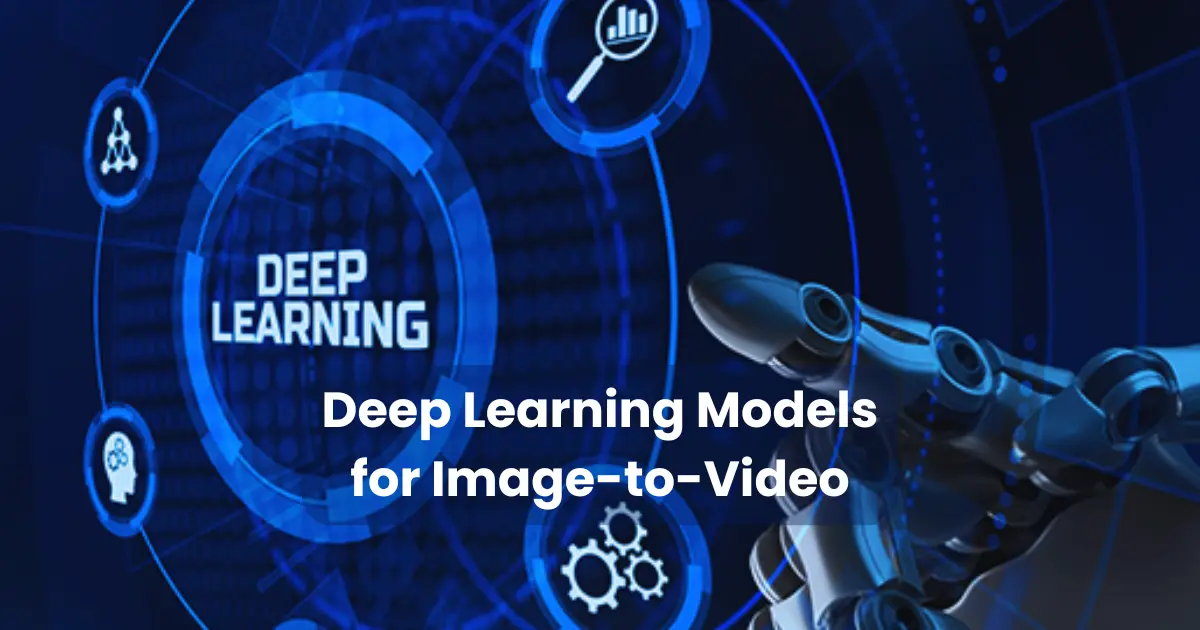
Contents
- 1 Understanding Deep Learning in Image-to-Video Conversion
- 2 Key Deep Learning Models for Image-to-Video
- 3 Training Process of Deep Learning Models for Image-to-Video
- 4 Applications of Image-to-Video Deep Learning Models
- 5 Challenges in Image-to-Video Deep Learning Models
- 6 Future Trends in Image-to-Video Deep Learning
- 6.1 1. Real-Time Image-to-Video Generation
- 6.2 2. Improved Temporal Consistency and Motion Prediction
- 6.3 3. Hybrid AI Architectures for Higher Efficiency
- 6.4 4. Ethical AI and Deepfake Detection
- 6.5 5. Personalized and Adaptive AI Video Models
- 6.6 6. AI-Powered Augmented and Virtual Reality
- 6.7 7. Cross-Domain AI Integration
- 6.8 Conclusion
In recent years, deep learning models for image-to-video have gained significant traction due to their ability to generate dynamic video content from static images. These models utilize advanced neural networks to predict motion, frame transitions, and realistic video sequences. With the rise of AI-driven content generation, researchers have continuously improved these models to enhance video realism, consistency, and efficiency.
By leveraging architectures such as Generative Adversarial Networks (GANs), Recurrent Neural Networks (RNNs), and Transformer-based models, deep learning enables the creation of high-quality videos from single or multiple images. This advancement has revolutionized fields such as animation, medical imaging, and virtual reality. As we explore deep learning models for image-to-video, we will uncover their working mechanisms, applications, challenges, and future potential in AI-driven video synthesis.
Understanding Deep Learning in Image-to-Video Conversion
Deep learning has transformed the way static images are converted into dynamic video sequences. By leveraging complex neural networks, AI models can predict motion, generate intermediate frames, and maintain temporal coherence in video synthesis.
How Deep Learning Enables Image-to-Video Conversion
At its core, deep learning models for image-to-video analyze spatial and temporal patterns within image datasets. They learn to interpolate missing frames, generate realistic motion, and ensure smooth transitions between frames. These models often rely on:
- Spatiotemporal Feature Extraction: Convolutional Neural Networks (CNNs) extract spatial features, while Recurrent Neural Networks (RNNs) capture temporal dependencies.
- Generative Modeling: Techniques like Generative Adversarial Networks (GANs) and Variational Autoencoders (VAEs) create realistic motion sequences.
- Sequence Prediction: Transformer-based architectures and Long Short-Term Memory (LSTM) networks predict the most likely future frames from a given image.
Key Components in Image-to-Video Deep Learning
- Neural Network Architecture – Multi-layered deep learning models process static images and predict movement across frames.
- Training Data – Large datasets of real-world video sequences help AI understand motion dynamics.
- Loss Functions – Functions like Mean Squared Error (MSE) and adversarial loss improve video generation quality.
- Temporal Consistency – AI ensures smooth motion by maintaining coherence across consecutive frames.
By utilizing these components, deep learning models for image-to-video enable applications in video enhancement, animation, and AI-assisted filmmaking. The next section will explore the leading models used for this transformation.
Key Deep Learning Models for Image-to-Video
Several deep learning models for image-to-video have been developed to generate realistic motion sequences from static images. These models leverage neural networks to predict and synthesize intermediate frames, ensuring smooth and coherent video generation. Below are some of the most prominent deep learning architectures used for image-to-video conversion.

1. Generative Adversarial Networks (GANs)
Generative Adversarial Networks (GANs) are widely used for image-to-video synthesis due to their ability to generate high-quality frames. A GAN consists of two competing networks:
- Generator: Produces synthetic video frames based on an input image.
- Discriminator: Evaluates the generated frames and distinguishes real from fake.
GAN-based models such as MoCoGAN (Motion-Conditioned GAN) and TGAN (Temporal GAN) enhance video realism by capturing motion patterns and temporal consistency.
2. Recurrent Neural Networks (RNNs)
RNNs, especially Long Short-Term Memory (LSTM) and Gated Recurrent Units (GRUs), are used to model temporal dependencies in videos. These models:
- Process sequential data to predict future frames.
- Maintain memory of previous frames, ensuring smooth motion.
- Improve frame interpolation and video prediction.
3. Transformer-Based Models
Transformers, originally developed for NLP, have recently been adapted for video generation. They offer:
- Self-Attention Mechanisms – Capture global dependencies between image pixels.
- Better Frame Prediction – Models like TimeSformer use attention layers to process spatial and temporal features.
4. Autoencoders and Variational Autoencoders (VAEs)
Autoencoders and Variational Autoencoders (VAEs) compress and reconstruct images while predicting video sequences. They are effective for:
- Frame Interpolation – Generating missing frames between key images.
- Low-Latency Video Synthesis – Reducing computational requirements.
Each of these deep learning models for image-to-video plays a crucial role in AI-driven video generation. The next section will discuss how these models are trained to produce realistic video outputs.
Training Process of Deep Learning Models for Image-to-Video
To generate high-quality videos from static images, deep learning models for image-to-video undergo an extensive training process. This involves preparing datasets, optimizing neural networks, and refining video synthesis. Below are the key steps in training these models.

1. Dataset Collection and Preprocessing
A well-curated dataset is essential for training models to understand motion patterns and temporal transitions. The process includes:
- Collecting Video Datasets – Large-scale datasets like UCF-101, Kinetics, and DAVIS provide real-world motion sequences.
- Extracting Frames – Videos are split into sequential frames to train models in generating motion between images.
- Data Augmentation – Techniques like flipping, scaling, and rotation enhance model robustness.
2. Model Architecture Selection
Different architectures are chosen based on the complexity and requirements of the image-to-video task:
- GANs – Train adversarial networks to generate realistic frames.
- RNNs and LSTMs – Capture temporal dependencies for smooth motion synthesis.
- Transformers – Improve frame prediction using self-attention mechanisms.
3. Training and Optimization
Once the dataset is prepared and the model architecture is chosen, training begins:
- Loss Function Optimization – Functions like Mean Squared Error (MSE), adversarial loss (for GANs), and perceptual loss improve video quality.
- Gradient Descent & Backpropagation – Adjusts model weights to minimize errors in frame prediction.
- Batch Processing – Speeds up training by processing multiple image sequences simultaneously.
4. Evaluating Model Performance
To assess the effectiveness of deep learning models for image-to-video, performance metrics are used:
- Structural Similarity Index (SSIM) – Measures image quality and coherence.
- Peak Signal-to-Noise Ratio (PSNR) – Evaluates the clarity of generated video frames.
- FID Score (Fréchet Inception Distance) – Checks how realistic the generated frames appear compared to real video sequences.
5. Fine-Tuning and Deployment
After training, models undergo fine-tuning to enhance video realism and smooth transitions. This involves:
- Hyperparameter Optimization – Adjusting learning rates, batch sizes, and regularization techniques.
- Reducing Artifacts – Addressing blurriness, flickering, and inconsistencies.
- Deploying the Model – Implementing the trained model for real-world applications like AI-generated animations and video enhancement.
By following these steps, deep learning models for image-to-video achieve high-quality video synthesis. The next section will explore their diverse applications across various industries.
Applications of Image-to-Video Deep Learning Models
The advancements in deep learning models for image-to-video have unlocked a wide range of applications across multiple industries. These AI-driven models are revolutionizing animation, healthcare, entertainment, and even scientific research by generating realistic video content from static images. Below are some of the most significant applications.

1. AI-Generated Animations
Deep learning enables the automatic creation of animated sequences from still images. This is particularly useful in:
- Cartoon and Anime Production – AI-powered tools generate smooth animations from concept art.
- Virtual Influencers and Avatars – AI-based characters are animated for social media, marketing, and entertainment.
- Automated Video Editing – AI synthesizes missing frames, improving motion continuity in animations.
2. Video Enhancement and Super-Resolution
AI-based image-to-video deep learning models enhance video quality by:
- Upgrading Low-Resolution Videos – Super-resolution models upscale older or low-quality footage.
- Frame Interpolation – AI generates intermediate frames for smoother slow-motion effects.
- Restoring Damaged Videos – Deep learning reconstructs missing or corrupted frames in archival footage.
3. Medical Imaging and Diagnosis
In healthcare, AI-generated video sequences from static scans aid in:
- Disease Progression Prediction – AI simulates how a disease (e.g., tumor growth) may evolve over time.
- 3D Reconstruction from 2D Scans – Medical imaging models create 3D visualizations from X-rays or MRIs.
- Surgical Training Simulations – AI-generated videos help train doctors using synthetic patient cases.
4. Virtual Reality (VR) and Gaming
Deep learning enhances gaming and VR experiences by:
- Generating Dynamic Backgrounds – AI creates realistic video textures for game environments.
- Animating Non-Playable Characters (NPCs) – AI-driven NPCs exhibit natural movements and emotions.
- VR Scene Reconstruction – AI synthesizes 3D video environments from 2D images for immersive experiences.
5. Forensics and Security
Law enforcement and forensic investigations benefit from image-to-video AI by:
- Reconstructing Crime Scenes – AI simulates events based on photographic evidence.
- Enhancing Surveillance Footage – Deep learning sharpens blurry or low-light security videos.
- Facial Motion Prediction – AI generates missing frames in video evidence for accurate analysis.
6. Scientific Research and Space Exploration
Researchers utilize deep learning models for image-to-video in:
- Astronomical Simulations – AI predicts planetary movements from telescope images.
- Biological Studies – AI models animate cell behavior and protein interactions.
- Climate Change Predictions – AI generates future environmental changes using satellite images.
The applications of deep learning models for image-to-video continue to grow, impacting industries worldwide. However, these models still face several challenges, which we will explore in the next section.
Challenges in Image-to-Video Deep Learning Models
Despite their impressive advancements, deep learning models for image-to-video still face significant challenges. These limitations impact video quality, computational efficiency, and real-world applicability. Below are some of the key challenges and obstacles that researchers and developers must overcome.
1. Maintaining Temporal Consistency
One of the biggest challenges in image-to-video generation is ensuring temporal consistency across frames. Issues include:
- Flickering Effects – Frame transitions often lack smoothness, causing unnatural motion.
- Motion Artifacts – Distorted or unrealistic movements can appear, reducing video realism.
- Inconsistent Object Persistence – Objects may change shape, color, or disappear in certain frames.
2. High Computational Costs
Training deep learning models for image-to-video requires vast amounts of computational power due to:
- Large Model Sizes – GANs, Transformers, and LSTMs require extensive memory and processing capabilities.
- Long Training Times – Training on large video datasets can take days or even weeks.
- Energy Consumption – Running deep learning models at scale demands significant power, impacting sustainability.
3. Data Limitations and Generalization
AI models rely on high-quality datasets for training, but several issues arise:
- Lack of Diverse Data – Many datasets lack diversity, leading to biases in generated videos.
- Overfitting to Training Data – Models may struggle to generalize beyond their training datasets.
- Insufficient Temporal Labels – Many datasets lack detailed temporal annotations, making it harder to train models effectively.
4. Ethical and Legal Concerns
The use of deep learning models for image-to-video raises ethical concerns, such as:
- Deepfake Misuse – AI-generated videos can be misused to create fake content, leading to misinformation and fraud.
- Privacy Issues – AI-generated surveillance enhancements could raise concerns about personal data security.
- Content Authenticity – Verifying AI-generated videos remains a challenge, as distinguishing real from synthetic content is difficult.
5. Balancing Video Quality and Speed
Generating high-resolution, realistic video sequences requires a balance between quality and processing speed:
- Real-Time Generation is Limited – Most models struggle to generate high-quality videos in real time.
- Trade-off Between Resolution and Speed – Increasing video quality often results in longer processing times.
- Compression and Storage – AI-generated videos require efficient compression methods to reduce storage costs.
6. Lack of Explainability in Model Decisions
Many deep learning models function as “black boxes,” making it difficult to understand how they generate video sequences. This affects:
- Debugging and Improving Models – Identifying and fixing errors in AI-generated content is challenging.
- Trust in AI-Generated Content – Users may be skeptical about adopting AI-driven video solutions.
- Model Interpretability – Researchers struggle to explain why certain frames or motions are generated incorrectly.
Future Research Directions
To overcome these challenges, researchers are exploring:
- Hybrid Models – Combining GANs, RNNs, and Transformers for better accuracy.
- Efficient AI Architectures – Reducing computational requirements while maintaining high-quality outputs.
- Ethical AI Policies – Implementing regulations for responsible AI usage in video generation.
While deep learning models for image-to-video continue to evolve, addressing these challenges is crucial for widespread adoption and ethical use. The next section will explore the future trends shaping this field.
Future Trends in Image-to-Video Deep Learning
As technology advances, deep learning models for image-to-video continue to evolve, offering new possibilities for AI-generated video content. Future developments will focus on improving realism, efficiency, and ethical AI usage. Below are some of the key trends shaping the future of image-to-video deep learning.

1. Real-Time Image-to-Video Generation
One of the most anticipated advancements is achieving real-time video generation. This will be essential for applications like:
- Live Virtual Avatars – AI-powered avatars that mimic real-time facial expressions and body movements.
- AI-Assisted Content Creation – Instant video generation for social media, gaming, and advertising.
- Enhanced Video Conferencing – AI-generated motion interpolation for smoother video calls in low-bandwidth settings.
2. Improved Temporal Consistency and Motion Prediction
Future models will prioritize smoother motion transitions and better frame coherence by:
- Leveraging Self-Supervised Learning – Reducing reliance on large labeled datasets while improving model learning efficiency.
- Enhancing Memory Mechanisms – Using advanced RNNs, LSTMs, and Transformers for better sequence prediction.
- Integrating Physics-Based AI – Ensuring realistic motion by simulating real-world physical laws.
3. Hybrid AI Architectures for Higher Efficiency
To overcome the computational limitations of current deep learning models for image-to-video, researchers are developing:
- GAN-Transformer Hybrids – Combining the generative power of GANs with the efficiency of Transformers.
- Neural Compression Techniques – Reducing the size of AI models while maintaining high-quality outputs.
- Cloud-Based AI Processing – Offloading computations to powerful cloud servers for faster and more accessible AI-powered video generation.
4. Ethical AI and Deepfake Detection
With the rise of AI-generated content, safeguarding against deepfake misuse is crucial. Future trends include:
- Deepfake Identification Tools – AI-driven systems that detect synthetic videos and ensure content authenticity.
- Blockchain for Video Authentication – Using decentralized technology to verify the originality of AI-generated videos.
- Regulatory Frameworks – Governments and tech companies establishing ethical guidelines for AI-generated content.
5. Personalized and Adaptive AI Video Models
Next-generation models will focus on customized and adaptive video generation, enabling:
- Personalized AI Avatars – AI-driven video generation that adapts to user preferences and facial expressions.
- Style-Aware Video Generation – AI models that generate videos in different artistic styles, from realism to anime.
- Adaptive AI Learning – Models that improve over time by continuously learning from new data inputs.
6. AI-Powered Augmented and Virtual Reality
Deep learning models for image-to-video will play a key role in VR and AR advancements, such as:
- Immersive AI-Generated Environments – Creating dynamic, realistic scenes for VR gaming and virtual tourism.
- AI-Driven Holographic Displays – Generating video-based holograms for business presentations and entertainment.
- Augmented Reality Assistants – AI-driven real-time video generation for interactive AR applications.
7. Cross-Domain AI Integration
Future AI models will integrate multiple domains of deep learning, leading to:
- AI-Powered Storytelling – Combining text, images, and AI-generated video to create interactive narratives.
- Multimodal AI Fusion – Merging voice, gesture recognition, and video generation for more interactive AI experiences.
- Autonomous Video Creation – AI-powered systems that generate complete videos, including narration, effects, and animations.
Conclusion
The field of deep learning models for image-to-video is rapidly advancing, offering groundbreaking possibilities for AI-generated video content. From improving motion consistency to enabling real-time video synthesis, these models are reshaping industries such as entertainment, healthcare, marketing, and virtual reality.
Despite their potential, challenges like high computational costs, temporal inconsistencies, and ethical concerns remain significant hurdles. However, emerging trends—including hybrid AI architectures, self-supervised learning, and deepfake detection technologies—promise to refine these models for greater efficiency and reliability.
As researchers and developers continue to push the boundaries of AI, deep learning models for image-to-video will become more accessible, producing high-quality, realistic, and adaptive video content. With responsible innovation, this technology will not only transform digital media but also open new doors for creativity, automation, and interactive experiences in the years to come.

